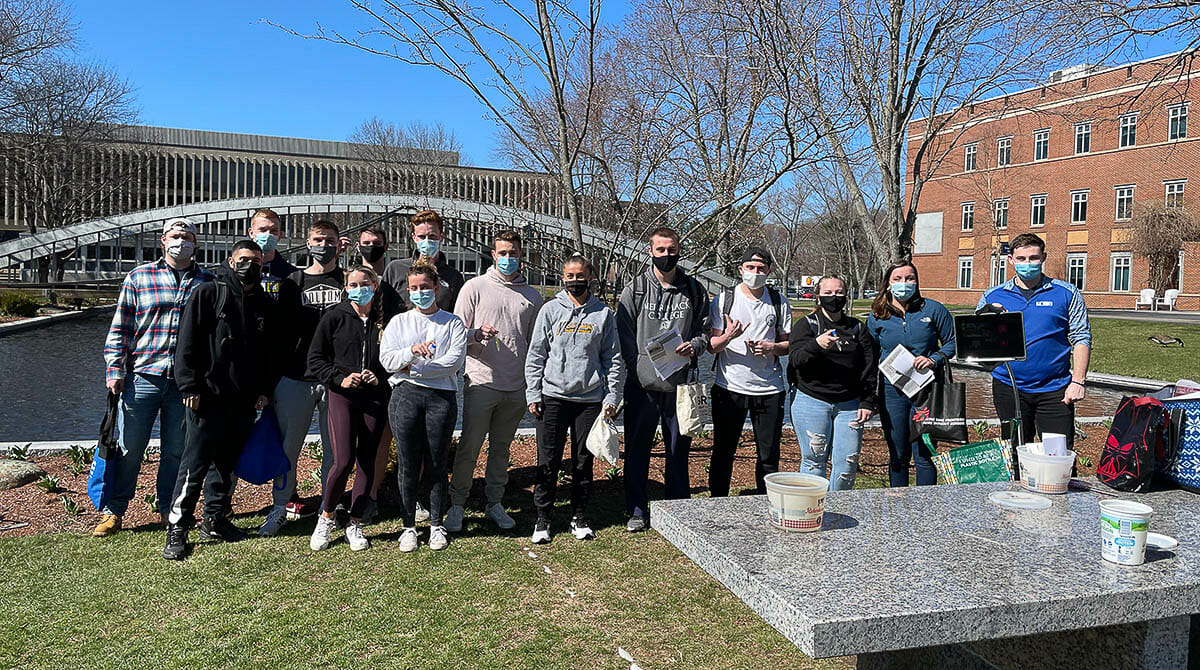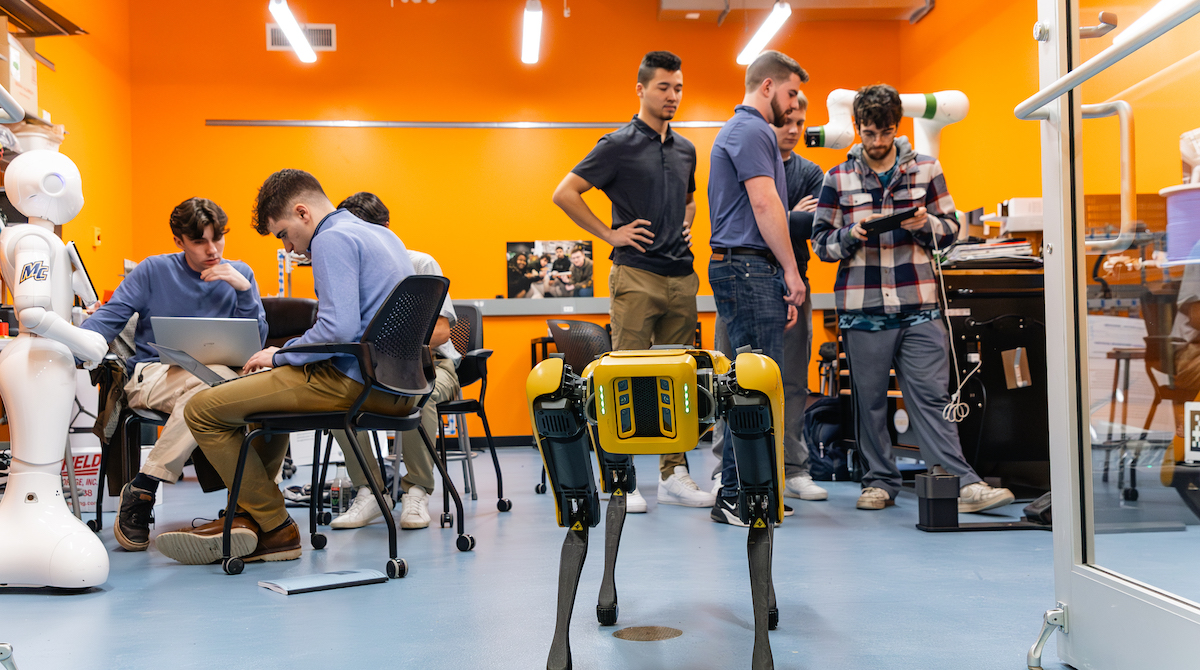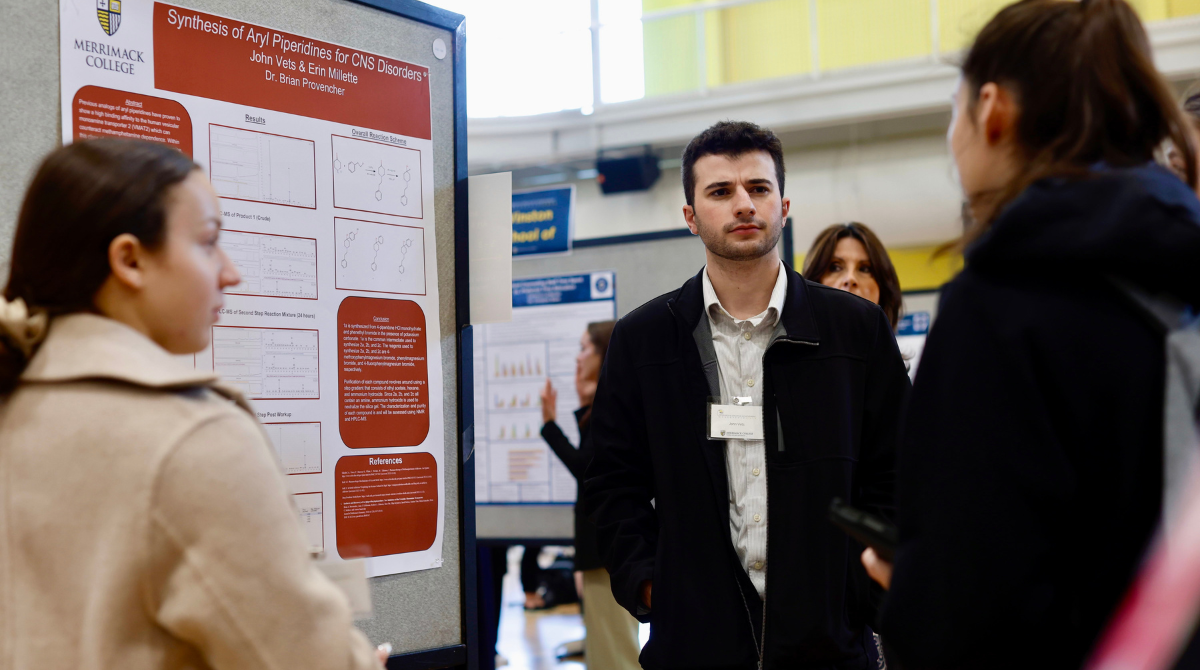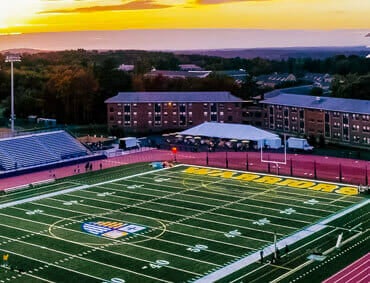COVID-19 restrictions have thrown a wrench into traditional learning opportunities. Studying the sciences has been especially difficult because coursework often relies on in-person experimentation and intensive lab work.
Associate Professor of civil engineering Cynthia Carlson recently introduced a new lab model in her spring 2021 course, Environmental Engineering (CEN3050). Traditionally, the course relies heavily on in-person labs and field trips to local wastewater management plants, where students gather water samples to analyze. As COVID-19 guidelines restricted in-person meetings, limited remote students’ access to campus and prohibited group field trips, Carlson developed a new plan for her class. On-campus students would study water bodies local to Merrimack’s campus. Remote students would do the same work using any body of water near their homes.
“I have some experience with field monitoring rather than working in a traditional indoor lab,” Carlson says. “And I thought this was a great opportunity to get the students engaged.”
The students started by researching local bodies of water and their surroundings to get a sense of what they might expect the water quality to be. They were encouraged to consider run-off – as with the stream by Lot K – and other environmental factors to gain an understanding of what might impact the overall water quality. After the initial research phase, students ventured out to gather their own water samples and conduct testing.
Instead of gathering in the labs, the work was done outdoors and on the students’ own time, allowing for proper social distancing and greater flexibility during a chaotic semester. For junior Delia Cormier, who studied Royal Crest Pond with her lab partner, the work was engaging and productive. Cormier says she has always been fascinated by water and was excited to get some hands-on experience this semester.
“Last spring when labs went completely remote, it was so difficult for me,” Cormier says. “Being able to do the work again in person has definitely been so much easier. I’ve been able to really pay attention and I can learn a lot better. I feel more engaged and interested in my work. It’s been really motivating.”
Cormier says her team was able to test for a wide range of indicators with the test kits Carlson provided to both remote and on-campus students. They tested for turbidity, which indicates how much sunlight can penetrate the water; dissolved oxygen, which reveals how much oxygen is in the water; and biochemical oxygen demand, which shows how much oxygen the water body actually needs for the ecosystem to thrive.
On-Campus Bodies of Water Tested
- Flaherty Stream (campus outflow)
- Lot K stream
- Mendel Pond (for group testing/training)
- Royal Crest Pond
- The Writers House Wetlands
Senior Thomas Schomburg, a commuter student also studying civil engineering, has been fully remote since the beginning of the pandemic. He was able to do the same tests as Cormier from home. Schomburg tuned in via Zoom for group demonstrations at Mendel Pond, where Carlson showed students how to use the test kits and gather data from their own samples. After, Schomburg was free to choose a body of water that was convenient for his location and given two weeks to complete the testing and analysis.
“As far as doing remote labs go, it can be pretty strange,” Schomburg says. “I feel like this lab has been a lot more accommodating to remote students. When classes first went online last spring, a lot of faculty would do the lab themselves and film it so we could watch them go through the steps. Now that we’ve all adapted more to the pandemic, we get to do the work ourselves again.”
Carlson says she hopes to continue incorporating field study in the future, regardless of the state of the pandemic. As vaccination rates continue to go up in the U.S. and around the globe, she’s also hopeful for a return to in-person lab work and field trips.
“I feel like I’ve kind of adopted our on-campus water bodies,” Carlson says. “If we do this next year and the next, we can start to see if the water qualities on campus are changing and we can monitor over time some things that are really close by. We probably would never have done that if we hadn’t been in this situation.”
Carlson says class data will also be shared with a global listing of water qualities, which is a public resource managed by the test kit organization EarthEcho. To view the public records, please visit MonitorWater.org.




